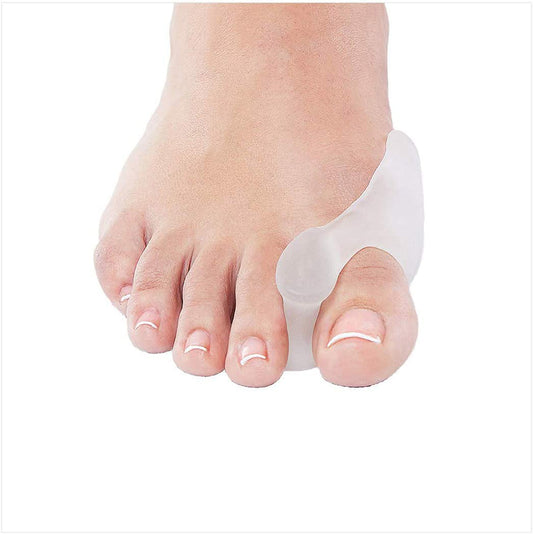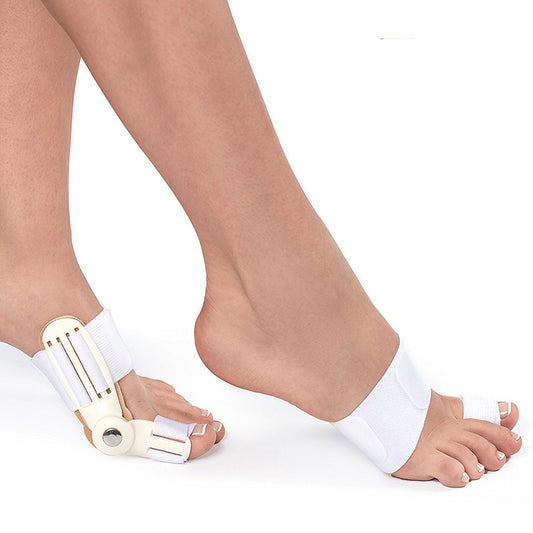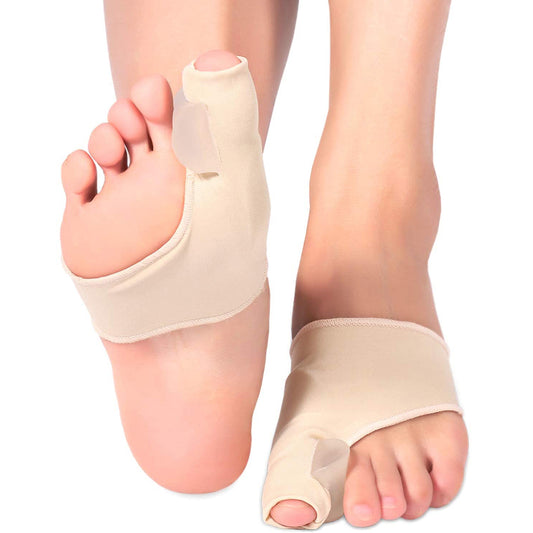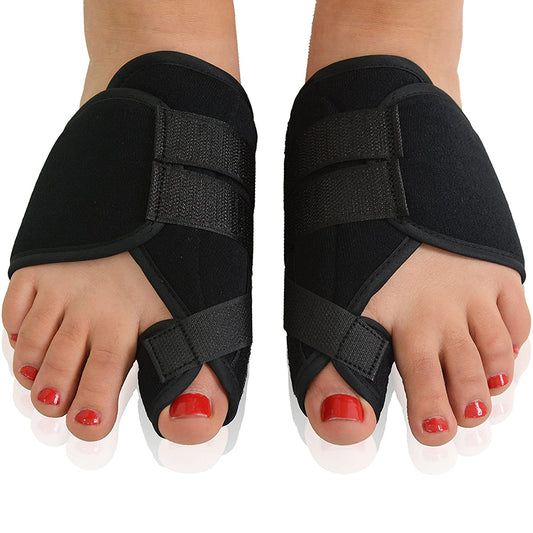-
Bunion Corrector for Men & Women - Orthopedic Bunion Splint, Hallux Valgus Brace
Regular price $19.99 USDRegular price$29.00 USDSale price $19.99 USDSale -
Bunion Relief Sleeves, Bunion Corrector Big Toe Separator Bunion Straightener Toe Joint Protector with Built-in Silicone Gel Pad for Hallux Valgus (1 Pair)
Regular price $19.99 USDRegular price$29.99 USDSale price $19.99 USDSale -
Original Nighttime Bunion Splints - 1 Pair-Stitched Velcro Bunion Correctors - Bunion Relief for Bedtime - for Men & Women
Regular price $19.99 USDRegular price$30.99 USDSale price $19.99 USDSale -

Gel Big Toe Bunion Guards & Toe Spreaders (2 Pieces) - Pain Relief for Crooked, Overlapping Toes
Regular price $9.99 USDRegular price$19.99 USDSale price $9.99 USDSale
Collection: Bunion Correctors and Splints: Solutions for Hallux Valgus Relief
Discover the Benefits of Bunion Correctors and Splints for Effective Relief
If you're struggling with the discomfort of bunions, you're not alone. Many people suffer from this common and often painful foot condition. Thankfully, there's an effective, non-invasive solution: bunion correctors and splints. Whether you need a Bunion Corrector for Men & Women or a Toe Spreader for Crooked or Overlapping Toes, our product collection has you covered.
Who Needs Bunion Correctors?
Bunion correctors are perfect for anyone experiencing:
- Toe Misalignment: If your big toe is starting to lean towards the other toes.
- Swelling and Pain: Noticeable joint pain at the base of the big toe.
- Uncomfortable Shoe Fit: Difficulty finding shoes that don't cause bunion pain.
They’re particularly helpful for individuals with Hallux Valgus, a condition where corrective surgeries aren't immediately necessary or for those who prefer conservative management options.
Why Do You Need This Product?
Bunions can cause significant discomfort and impair your mobility if left untreated. Using a bunion corrector can:
- Relieve Pressure and Pain: Reduce discomfort caused by rubbing and overlapping of the toes.
- Prevent Further Deformity: Help slow the progression of the bunion's angle.
- Support Foot Health: Minimize the development of corns and calluses associated with bunions.
Is a Bunion Corrector Suitable for You?
Consider using bunion correctors if you experience:
- Frequent pain while walking or wearing shoes.
- Visible redness and swelling around the big toe joint.
- Difficulty with foot mobility or balance issues due to toe misalignment.
Features of Our Bunion Correctors
Here at ZSZBACE, we design our products with high-quality materials and innovative features, including:
- Orthopedic Design: Promotes natural toe alignment with a comfortable fit.
- Versatility: Options that can be worn with shoes or as standalone protective gear.
- Durability: Long-lasting materials that withstand daily wear and tear.
Each product, like our Bunion Relief Sleeves, is made with built-in silicone gel pads for superior comfort and effectiveness.
Common Questions About Using Bunion Correctors
How do Bunion Correctors Work? Bunion correctors function by gently aligning the big toe, redistributing pressure more evenly across the foot, and reducing friction between toes.
Can Bunion Correctors Cure Bunions? While they're great for symptom relief and preventing worsening, surgery is the only way to fully repair a bunion.
Are They Comfortable? Yes, particularly soft gel models like the Gel Big Toe Bunion Guards & Toe Spreaders, which can be worn discreetly under socks.
Enhancing Your Comfort and Foot Health
Regular use of bunion correctors not only offers immediate pain relief but also enhances overall foot health by improving joint flexibility and eliminating friction. This can help address other issues like corns, calluses, and potentially even the symptoms associated with hammertoes and other foot ailments.
Join the ZSZBACE Community
With over a decade of experience, ZSZBACE has become synonymous with quality and customer care. Our bunion correctors are crafted from top-notch materials to ensure maximum comfort and durability, meeting the diverse needs of our customers. Whether you seek advice, need assistance selecting the right product, or require support after purchase, our dedicated team is here to assist you every step of the way.
Transform your foot health with our reliable range of bunion correctors and splints, and take confident steps towards a more comfortable lifestyle. Discover the full potential of our products today by exploring our collection!







